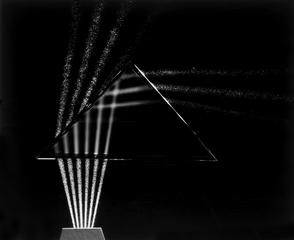|
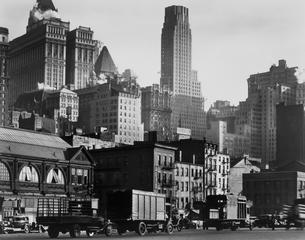
|
 |
3
of 11 |
 |
|
 |
 |
 |
New
York in 1929 |
|
 |
| Berenice Abbott knew
Eugene Atget for only a few months before he died, but from the moment she
saw his photographs of Paris—streets, people, buildings and storefronts—she
knew she had found something special. She bought Atget’s entire collection,
more than 1,000 glass negatives and 7,000 prints, and brought them to the
United States to promote them to museums, galleries, and art and photography
magazines.
When Berenice Abbott arrived in New York in 1929 with Atget’s photos,
she was planning on a three-week visit. She had been living in Europe
for eight years, where she had an established and successful photography
business. But what she saw in New York took her breath away. Unbelievable
wealth and heart-breaking poverty; cars, trains and trolleys among horse-drawn
milk carts; straight-sided skyscrapers soaring up around old ramshackle
buildings; rectangles everywhere; an intense machine of a city. Abbott
never returned to Paris. Instead she began photographing New York just
as Atget had photographed Paris. She wanted to make a photographic record
of this city of contrasts. But Abbott would photograph New York in her
own way, imposing her love of facts and her belief that photography, a
twentieth-century invention, was the only medium worthy of capturing twentieth-century
New York. She set up a studio in Manhattan and spent the next ten years
photographing New York.
|
| |
 |
3
of 11 |
 |
|
|
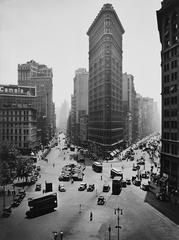  
|
 |
5
of 11 |
 |
|
 |
 |
 |
Abbott
and Steiglitz |
 |
 |
Do
Photographs Ever Lie? |
|
|
"I agree
that all good photographs are documents, but I also know that all
documents are certainly not good photographs. Furthermore, a good
photographer does not merely document, he probes the subject, he
‘uncovers’ it …"
—Berenice
Abbott,
|
Berenice Abbott photographed the
Fuller building, nicknamed "the Flatiron," from the top floor
of a six-story commercial building nearby. For Abbott, the 20th-century
invention of photography was the perfect way to document the 20th century.
"I believe there is no more creative medium than photography to recreate
the living world of our time," she wrote. "Photography gladly
accepts the challenge because it is at home in its element: namely, realism—real
life—the now." ("Photography at the Crossroads"
1951) For many New Yorkers the unusual Flatiron building was a symbol
of modern life, technology, and architecture.
Abbott’s photograph of the Flatiron demonstrates her principles
of documentary photography: it serves as a record for the future and has
content, or meaning. But Abbott did not intend her content to express
feelings. "People say they have to express their emotions. I’m
sick of that." Abbott told an Art News magazine writer. "Photography
doesn’t teach you how to express your emotions; it teaches you how
to see." (Art News, January 1981)
|
| |
 |
5
of 11 |
 |
|
|
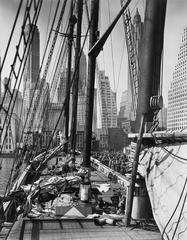  
|
 |
6
of 11 |
 |
|
 |
 |
 |
Depth
of Field |
|
|
|
|
Theoline is the name of
the schooner that Abbott found unloading potatoes at Pier 11 on the Hudson
River side of Manhattan. Standing on the ship’s deck, she tried several
lenses and finally settled on a wide-angle lens to create this complicated
composition. The ship’s masts, rigging and sails in front of the
upright rectangles of the New York city skyline produces a tangled scene.
In the lower half of the picture big solid lines of the edge of the boat
and the flat area of the deck reach out into the confusion and help resolve
the composition. Both the buildings in the background and the diagonal
lines of the ship’s rigging are in sharp focus, made possible by
Abbot’s ability to photograph with great depth of field.
As Abbott described it, making this photograph was as complicated as
it looks: "This boat was rising and lowering, and I had a tremendous
depth of field to cope with here. All these lines which I wanted very
clear. When the boat was up, the buildings would go down, so it was all
very carefully and slowly arranged." (Kay Weaver and Martha Wheelock,
Berenice Abbott, A View of the 20th Century, Ishtar Films, 1992)
|
|
Depth of Field
Depth of field
is the area in sharp focus between the object that is farthest away
from the camera (the background) and the object that is closest
to the camera (the foreground). While many variables such as available
light, film speed and shutter speed contribute to depth of field,
the setting of the camera's aperture has the most impact when everything
else remains constant. Some photographs may call for the greatest
depth of field possible, where there is sharp detail in the foreground
and background. Other photographs may call for soft focus backgrounds
or foregrounds when too many details may be distracting.
|
|
|
|
 |
6
of 11 |
 |
|
|
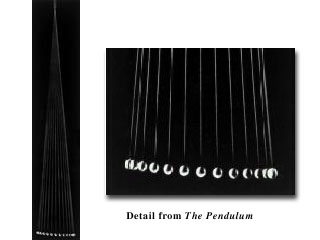
|
 |
9
of 11 |
 |
|

|
| "…you
need the best photographers in the world and I'm the one to do it." |
 |
|
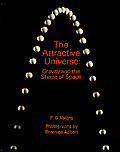 After
spending ten years to make more than 300 pictures of New York City,
Berenice Abbott turned to science. She knocked on the doors of scientists,
telling them, "You scientists are the worst photographers in the
world and you need the best photographers in the world and I'm the one
to do it." (Kay Weaver and Martha Wheelock, Berenice Abbott, A
View of the 20th Century, Ishtar Films, 1992) She invented what she
needed as she worked, developing cameras and equipment like specialized
tripods as well as techniques. After the Russian space capsule Sputnik
was launched in 1957, people became more interested in science and scientists
started listening to Berenice Abbott. This picture illustrating a pendulum
appeared in The Attractive Universe: Gravity and the Shape of Space,
a book about physics published in 1969. After
spending ten years to make more than 300 pictures of New York City,
Berenice Abbott turned to science. She knocked on the doors of scientists,
telling them, "You scientists are the worst photographers in the
world and you need the best photographers in the world and I'm the one
to do it." (Kay Weaver and Martha Wheelock, Berenice Abbott, A
View of the 20th Century, Ishtar Films, 1992) She invented what she
needed as she worked, developing cameras and equipment like specialized
tripods as well as techniques. After the Russian space capsule Sputnik
was launched in 1957, people became more interested in science and scientists
started listening to Berenice Abbott. This picture illustrating a pendulum
appeared in The Attractive Universe: Gravity and the Shape of Space,
a book about physics published in 1969.
Abbott cropped the photo to give it long, slender edges that complement
the hanging ball. Determined to prove that a photograph could document
scientific fact as well as communicate the beauty of science, she wrote,
"The scientific photographs had to be carefully composed, but they
couldnt look that way. I didnt want the composition to be so obvious as
to take over . . . when you look at a photograph and all you can see is
the composition then you know it is a big flop." (Hank O'Neal, Berenice
Abbott American Photographer, 1982)
|
|
|
 |
9
of 11 |
 |
|
 | 11
of 11 |  |
|
For more about Berenice Abbott: |
 | Berenice
Abbott, Berenice Abbott Photographs,
New York: Horizon Press,
1970 |
| |
An overview of the work of Berenice Abbott shown through photographs selected
by Berenice Abbott, with an introduction by poet Muriel Rukeyser.
|
 | Hank
O’Neal, Berenice Abbott American Photographer,
New York:
McGraw-Hill Book Company, 1982 |
| |
The only biography of Abbott in print, it covers all of her work
through the 1980s.
|
 | Bonnie
Yochelson, Berenice Abbott: Changing New York,
New York: The
New Press, 1997 |
| |
A new and improved edition, this book includes all of the photographs
in Abbott’s ten-year photo documentary of New York. More than 300 pictures
are divided into regions with detailed maps and captions from the original research.
Includes a lively essay by Yochelson about Abbott’s New York work.
|
 | Berenice
Abbott, New Guide to Better Photography,
New York: Crown Publishers,
Inc., 1953 |
| |
The second updated edition of Abbott’s Guide to Better Photography,
this how-to manual is illustrated with photographs by Abbott and others. Includes
a revealing chapter on composition, Abbott-style.
|
 | Kay
Weaver and Martha Wheelock, Berenice Abbott, A View of the 20th Century,
Los Angeles: Ishtar Films, 1992 (Color, 59 minutes) |
| |
An entertaining documentary film about Berenice Abbott’s
career, narrated by the artist.
|
 | Classic
Essays on Photography, ed. Alan Trachtenberg,
New Haven, Conn.: Leete’s Island Books, Inc., 1951 |
| |
Abbott’s essay written for a photo magazine detailing her
views on both photography as art and documentary photography.
|
 | Link
to Museum of the City of New York
http://www.netresource.com:80/mcny/abbott.htm |
| | All of
the Abbott photos from her study of New York on-line, plus the essay by Bonnie
Yochelson from the newly released book, Changing New York
|
 |
Evans G. Valens, The Attractive Universe: Gravity
and the Shape of Space,
Cleveland: World Publishing Co.,
1969 |
| |
Illustrated by Berenice Abbott, this little book explores the laws of gravity
on earth and in space and exemplifies Abbott's ideas about explaining scientific
theories through photography.
|
 | ArtsConnectEd
http://www.artsconnected.org/
|
| |
ArtsConnectEd is a collaboration between The Minneapolis Institute of Arts
and the Walker Art Center which provides online access to the rich collections
and reference, archive, media, and curriculum resources of both institutions.
Search ArtsConnectEd for related books and materials in the libraries of The Minneapolis
Institute of Arts and the Walker Art Center
Search ArtsConnectEd for more Berenice Abbott photographs in the collections of
The Minneapolis Institute of Arts and the Walker Art Center
|
 | 11
of 11 |  |
|
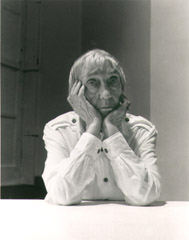
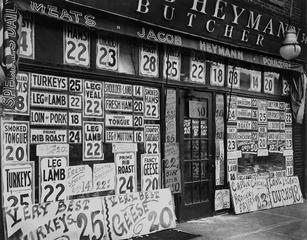



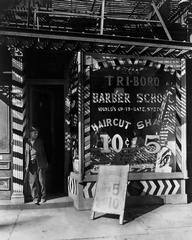





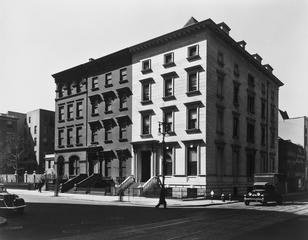

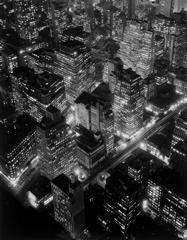



 After
spending ten years to make more than 300 pictures of New York City,
Berenice Abbott turned to science. She knocked on the doors of scientists,
telling them, "You scientists are the worst photographers in the
world and you need the best photographers in the world and I'm the one
to do it." (Kay Weaver and Martha Wheelock, Berenice Abbott, A
View of the 20th Century, Ishtar Films, 1992) She invented what she
needed as she worked, developing cameras and equipment like specialized
tripods as well as techniques. After the Russian space capsule Sputnik
was launched in 1957, people became more interested in science and scientists
started listening to Berenice Abbott. This picture illustrating a pendulum
appeared in The Attractive Universe: Gravity and the Shape of Space,
a book about physics published in 1969.
After
spending ten years to make more than 300 pictures of New York City,
Berenice Abbott turned to science. She knocked on the doors of scientists,
telling them, "You scientists are the worst photographers in the
world and you need the best photographers in the world and I'm the one
to do it." (Kay Weaver and Martha Wheelock, Berenice Abbott, A
View of the 20th Century, Ishtar Films, 1992) She invented what she
needed as she worked, developing cameras and equipment like specialized
tripods as well as techniques. After the Russian space capsule Sputnik
was launched in 1957, people became more interested in science and scientists
started listening to Berenice Abbott. This picture illustrating a pendulum
appeared in The Attractive Universe: Gravity and the Shape of Space,
a book about physics published in 1969. 